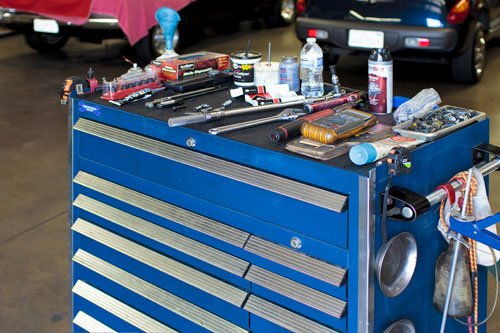Factory Scheduled Maintenance
Vehicle manufacturers all suggest minimum maintenance intervals/schedules. Most schedules only carry through 120—150,000 miles; then leave you on your own or tell you to start over from the beginning of the schedule.
Factory recommendations are a very good guide
and should not be taken lightly, but I also believe they are considered the minimum amount of service suggested by the factory.Most of us are driving our cars and trucks longer and into higher mileage than in the past, in part, because they are built much better. Think back to the 70s, 80s, even early 90s when your vehicle needed quite a bit of
maintenance
or attention:- checking/adding oil between the 3,000 mile oil changes
- tune up at least once a year—sometimes twice
- brakes—every 15 to 25,000 miles was about as far as you could go
- fan belts 15 to 25,000 miles
- front end suspension repair started after 40-60,000 miles
- Oh yes, let’s not forget those oil leaks that would show up from time to time.

The other reason we drive our cars longer is they cost more and take a lot longer to pay for. I recently read the average age of cars on the road is eleven years. Both my main transportation cars are above that average by quite a bit.
Preventative maintenance is not as cookie cutter as the vehicle owner’s manual leads you to believe.
My duty is to sort out the
maintenance for your vehicle based on your particular driving habits
and needs. We each drive a little different, with different needs and a different vehicle. My recommendations consider all of those things. For some I will suggest seeing your vehicle as often as every three months, most of you every four months (three times a year) and some of you every six months. These suggestions are based on my confidence of how long your vehicle can go without being serviced or least checked over. I take break downs personally, especially if it’s something that could have been somehow prevented. A break down is not only inconvenient, but can be dangerous.As
cars and trucks
have gotten much more reliable and require many less repair visits for actual failures, there are fewer inspections and fewer opportunities to identify potential problems. The actual “oil change” part of a regular service may not be as important as the inspection part of the service.I enjoy a feeling of accomplishment from maintaining and servicing your vehicle based your individual car, driving habits and needs, rather than relying on the manufacturer’s cookie cutter preventative maintenance schedule. One size doesn’t fit all.




